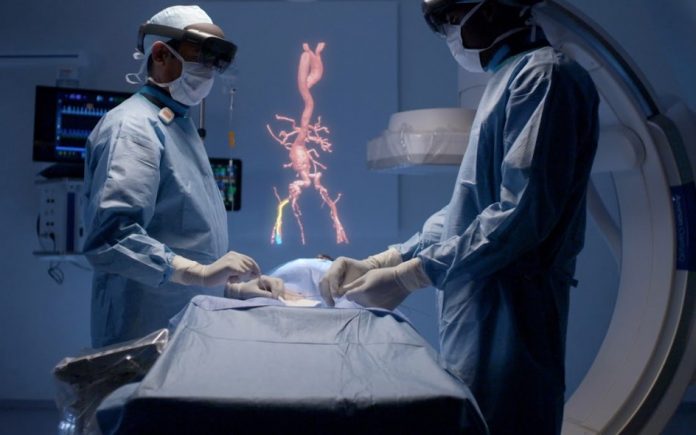BEIJING, Wahid Abdul, a Pakistani student at Third Xiangya Hospital of Central South University has hoped to conduct in-depth research on cardiac interventional therapy skills in China and make contributions to his country in the future.
“Since I was a child, I have heard ‘long live the Sino-Pakistani friendship’ countless times. From then on, I had a strong curiosity about China,” he said in an interview with China Economic Net (CEN).
During the nine years in China, he has always worked hard towards the goal of becoming an outstanding doctor. Recently, he has successfully passed the degree application and is about to study here for a PhD degree in cardiac interventional therapy.
Although most of the family members are businessmen, Wahid Abdul had different ambitions from the beginning. “I hope to have a job that can serve and help others, so I chose medicine as my career choice.
During my internship in China, I found that the direction of internal medicine is my favourite and the most suitable discipline for me.
In the end journal of “Bio medicine and pharmacotherapy”, and the co-author of “A study of clinical application of triple lumen continuous negative pressure irrigation catheter in surgical management of infected, I chose cardiology as my research direction,” he said.
As the first author of an academic paper on the title of “High Mobility group box-1 as an inflammation driver in cardiovascular diseases” in SCI necrotizing pancreatitis” in SCI journal of “Hepatobiliary pancreatic Sciences”, Wahid Abdul has set the new goal for his PhD, at least three SCI journal articles.
On this point, he has started to communicate with his doctoral adviser in order to confirm the specific research direction.
In addition to the personal career development, Wahid Abdul also pays attention to the development and progress of the medical field in Pakistan.
In the past two decades, Pakistan’s medicine has developed rapidly, but there is still a lot of room for improvement. Therefore, relevant advanced technology and highly educated talents are extremely popular in Pakistan now.
“Regarding cardiovascular disease, I think China-Pakistan medical cooperation can do a lot in this regard.” In Pakistan, due to environmental conditions and other restrictions, diagnostic and emergency conditions for cardiovascular diseases are usually limited, Abdul noted.
And this often leads to an imbalance in medical resources. It also means that hospitals in big cities can provide patients with timely treatment, but patients with cardiovascular diseases in remote and rural areas often cannot get timely diagnosis, which delays their treatments. That is to say, delay in diagnosis oftentimes leads to worse health issues that could have potentially been preventable.
“Therefore, it is urgent to carry out broader cardiovascular disease monitoring and intervention treatment in Pakistan.”
To combine advanced medical technology with local conditions in Pakistan, Dr Wahid Abdul had got some inspiration from a special action in China. The prevalence of cardiovascular diseases in China is on a continuous rise. It is estimated that there are 330 million people suffering from cardiovascular disease.
According to the Report on Cardiovascular Disease in China 2019, the National Center for Cardiovascular Diseases of China launched the “Healthy Heart, Healthy Community, and Healthy China” initiative nationwide in 2015, and cooperated with regional medical institutions to implement the “Basic Cardiovascular Disease Comprehensive Risk Management Project”.
For more than 5 years, 299 project sites in 31 provinces, municipalities and autonomous regions across the country have carried out initial screening and in-depth investigation of cardiovascular disease risk for residents aged 35-75 step by step, as well as early detection of high-risk individuals and early-stage patients, and then provided targeted intervention treatment and long-term follow-up.
In this process, a large number of cardiovascular disease patients and potential patients in rural and remote areas have received relatively effective interventions.
China and Pakistan undoubtedly have the same vision and broad scope for cooperation: to spread advanced medical technology and preventive and therapeutic measures to the vast rural areas.
Besides, it is important that the Pakistani health system adds chronic illness to its health care agenda. At the local and population level a quality surveillance system is needed in order to determine the effects of risk factors of CVD, such as smoking, unhealthy diet, lack of physical activity, high blood pressure, and obesity.
In this aspect, it may also be able to gain experience from China’s local monitoring and screening projects.
“Let every patient receive effective treatment in time, instead of affecting health and living quality due to limited conditions,” Wahid Abdul concluded with his long-standing dream.
Follow the PNI Facebook page for the latest news and updates.








